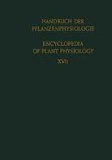Search
Search Results
-
Spatial distribution of Beta glucan containing wild mushroom communities in subtropical dry forest, Thailand
In addition to their use as food, mushrooms have been gaining importance in medicinal practices. Beta glucan, known as a modulator of the immune...

-
Topography-specific emergence of fungal fruiting bodies in warm temperate evergreen broad-leaved forests on Yakushima Island, Japan
We conducted line route censuses of fungal fruiting bodies from August to September in 2005 and 2006 along ridges and valleys and compared the...
-
Molecular phylogenies and mating study data in Polyporus with special emphasis on group “Melanopus” (Basidiomycota)
“Melanopus” is an unranked infrageneric group within Polyporus , a genus comprising wood-decaying homobasidiomycetes. This study compiles new...

-
Inoculation Method of Scleroderma columnare onto Dipterocarps
Sixty-eight species of basidiomycetes, including 34 species of mycorrhizal fungi, were collected from dipterocarp stands in Kalimantan, Indonesia....
-
Guild structure of wood-rotting fungi based on volume and decay stage of coarse woody debris
Wood-rotting fungi are major organisms exploiting coarse woody debris (CWD) in forests. Here, guild structure of wood-rotting fungi was investigated...

-
The tropical Polyporus tricholoma (Polyporaceae) — Taxonomy, phylogeny, and the development of methods to detect cryptic species
The stipitate pore-bearing fungus Polyporus tricholoma ( Polyporus infrageneric group Polyporellus ) is commonly reported from Mesoamerica and more...
-
Type studies of the polypores described by E. J. H. Corner from Asia and the West Pacific I. Species described inPolyporus, Buglossoporus, Meripilus, Daedalea, andFlabellophora
Identifications of 28 polypore species described by Corner were made by type examinations. The following new comblnations are proposed: Antrodiella...
-
Food preferences and nematode parasitism in mycophagousDrosophila
Food preferences and nematode parasitism were studied in natural populations of mycophagous Drosophila in and near Sapporo, northern Japan. Species...
-
Studies in the taxonomy of the Polypores II
The following genera are redefined: Albatrellus S. F. Gray , Heterobasidion Bref. , Haploporus Bond. et Sing. ex Sing. , Fomitopsis P. Karst . and Rigidoporus ...
-
The physiology of development in fungi
Fungi differ widely in vegetative form and in details of their life-cycles. A few fungi are unicellular but most consist of branched filaments or...
-
The physiology of development in fungi
Fungi differ widely in vegetative form and in details of their life-cycles. A few fungi are unicellular but most consist of branched filaments or...
